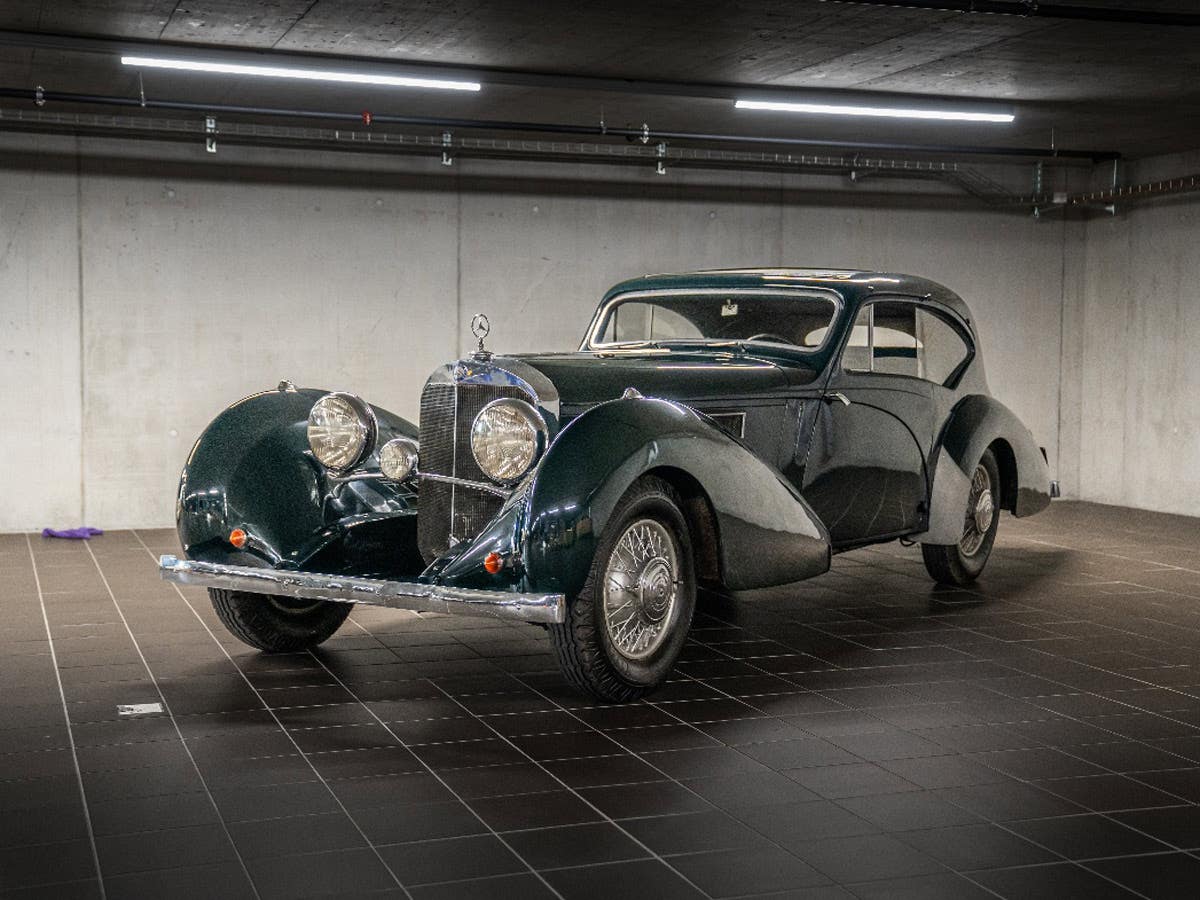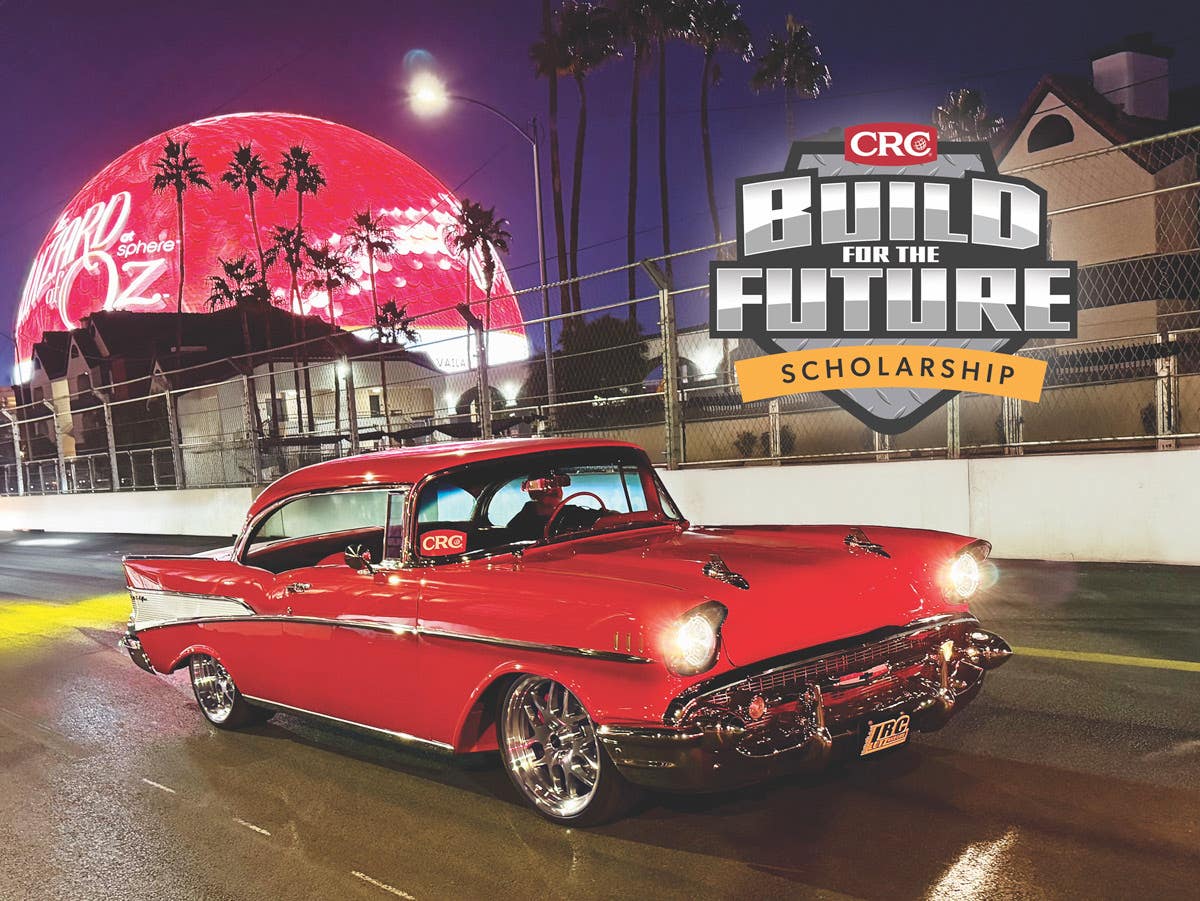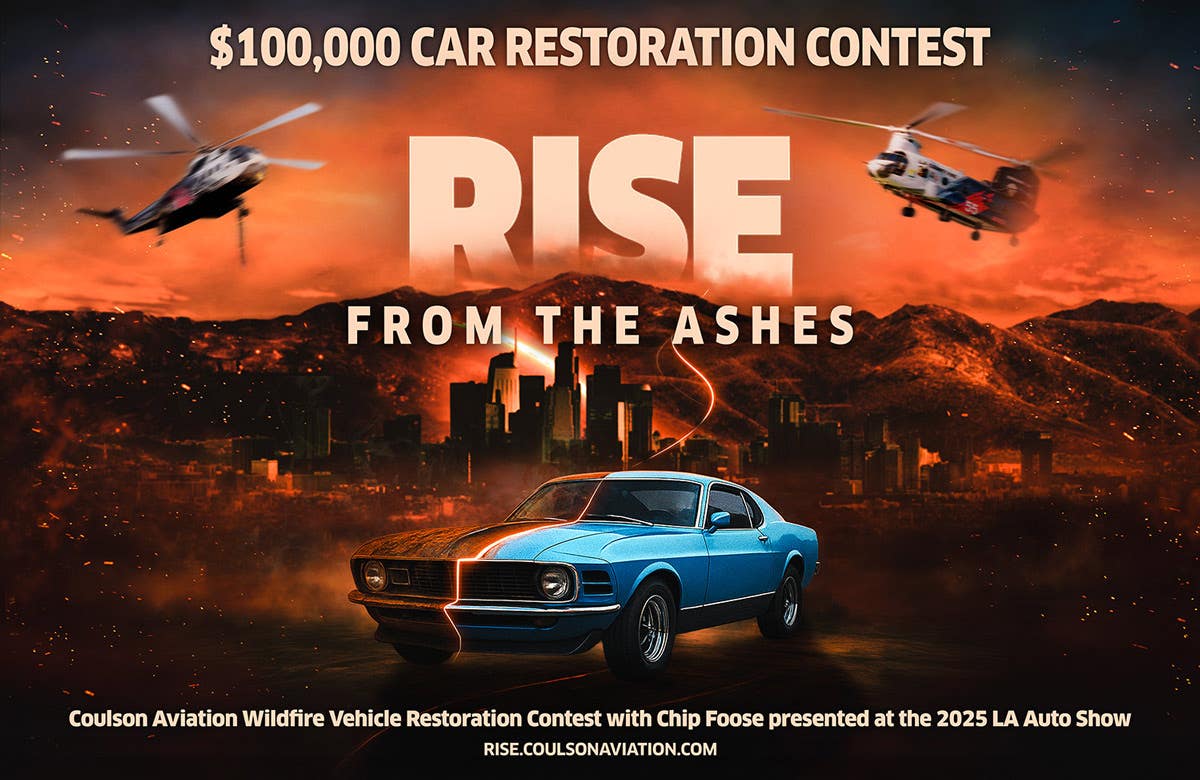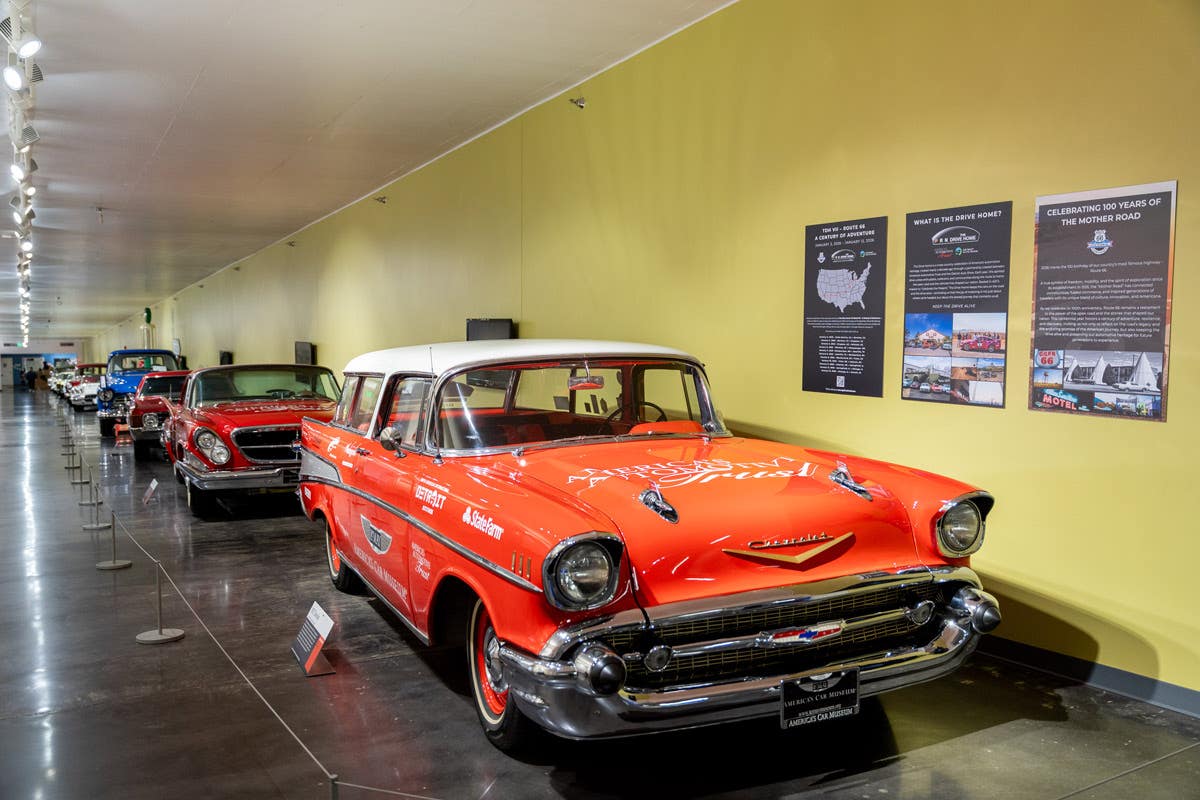Having a gas in a BONE-STOCK WILLYS
Editor Input Needed
In a sea of shiny pro-street and gasser-style Willyses painted bright reds and yellows, Al Lindgren's unrestored, ghostly Bedford Gray 1941 Willys Americar coupe, with all of its chips and dings and its skinny bias-ply tires, is the star of the show.
And unlike those other Willys owners, Lindgren didn't have to re-engineer his Willys' suspension, cut its body to fit bigger meats or build an early Hemi engine for the coupe to attract a crowd. He barely had to track down any parts, let alone paint the coupe. In fact, the less he does to it, the more it stands out.
After more than 65 years, this Willys retains nearly all of its original paint. Equally surprisingly, it's never even seen a drag racer's torch. Its current owner, Al Lindgren, owns a second Willys coupe that was a gasser in the 1960s. That car is being revived to gasser configuration, but the coupe pictured here will remain stock as long as it's in Lindgren's hands. Lindgren tracked this car's history back to the original owner, a Willys dealer who sold only two cars, including this one. (Nathan Van Bogart photo)
To find out how Lindgren's Willys coupe remained one of the finest original '41 Willys coupes, one need only to trace its tracks from the start. Luckily, Lindgren has just done that.
In the early 1940s, Chris Nelson from Canton, S.D., received a license to distribute Willys vehicles. According to Lindgren's research, the penny-wise Nelson wanted the license only to get a better deal on a new car. Willys required its licensees to purchase at least two vehicles, so Nelson bought two coupes, the most affordable body style from America's least-expensive full-size marque.
It's hard to believe, but the 1937 and 1938 Willyses, which shared basic body shells with this 1941 Americar, were voted as the worst-looking cars those years in an annual poll taken at the New York Auto Show by the Market Research Corp. There's no question that the Willys' design has proven timeless, and that revised front sheet metal in 1940 only made what many now consider to be a good thing even better. This particular '41 Willys is so original, it still retains its optional exhaust tailpipe extension.
As required, two Willyses arrived at Nelson's South Dakota business from Willys' Toledo assembly line: a blue coupe and the gray coupe pictured here. Nelson kept the blue coupe for himself, and it was eventually destroyed in a garage fire during the 1950s. The gray coupe was sold to Nelson's brother Herman, who kept the miles low. From 1941-'59, Herman only put 21,000 miles on the Willys, and from 1959-'67, he added only 800 more miles to the odometer. All the while, Herman kept the car serviced and in a heated garage.
By the late 1960s, Herman probably endured countless offers from drag racers to buy his Willys coupe, but he resisted every one of them. Since the 1950s, the type of people who would give a Willys a second look were drag racers with thoughts of Hemi engines and Oldsmobile rear ends dancing in their heads. Thanks to the Willys' featherweight status and short wheelbase length, which actually aided traction at drag strip Christmas trees, Willyses were the perfect drag cars, never mind the fact that they looked good doing it.
It took more than a stock engine to move the Willys, however. The 63-hp four-cylinder installed by the factory into every 1941 Willys was good for puttering along back roads at a decent clip, but as the number of freeways (and their speed limits) increased, driving an old and stock Willys may have seemed like a liability more than a leisure activity. From this line of thinking, many drag racers probably felt they were doing a favor by modifying Willyses.
It's a cavernous trunk, but is it large enough to sleep in? The second owner's family thought so and camped out here on occasion. Under the original tools and reproduction trunk mat, the car's current owner found previous owners' names scratched into the paint. The names are still there.
When Herman Nelson finally did sell his Willys in 1967, it wasn't to a drag racer or street rodder ' it was to Sonny Hagseth, his great nephew. Herman cut Sonny a sweet deal on the 21,700-mile Willys and handed over the car and title for only $200.
The car's age and low sale price didn't prevent Sonny from trusting its dependability. He used the car on several trips, and he and his family often slept in the car's cavernous trunk on overnight trips. Lindgren learned from Sonny that the car would happily cruise at 60 mph.
The round-cornered razor grille and teardrop-shaped headlamps of the 1941 Willys perfectly harmonize with the car's bow-edged hood. Note the Americar name on the leading edge of the hood.
By this time, the use of Willyses as good drag machines was well-known, and Sonny must have been tempted to check out the drag racing experience for himself. In 1968, he took the still-stock car to the Thunder Valley Drag Strip and entered it in U/Stock where he was pitted against a VW Beetle. While the Willys made an impressive show of spinning one of its rear tires, it lost the race to the Beetle. Luckily, that was the end of this Willys' gasser experience.
In 1972, Sonny decided to start a construction business, so he placed a "for sale" sign in the Willys' window. While in Sioux Falls, the car caught the attention of Joe Castle, a service station owner. Castle bought the car for $1,500 and scratched his name in the trunk before selling it four years later. Thanks to his mark, Lindgren was able to trace each of the car's owners and nearly all of its blemishes, right down to a ding on the front fender.
Note how the seal between the door vent glass and side glass is incorporated into the side window for a clean and sporty look with the windows down.
Word of Castle's ownership of the Willys spread as far as California, and around 1976, he received a call from Ted Shafer, a jazz musician in San Francisco's Ted Shafer's Jelly Roll Jazz Band, asking if Castle would sell the car. Shafer already owned a 1941 Willys sedan and wanted to add a coupe to his collection, but was having a difficult time finding a stock Willys coupe in California. After Castle agreed to put new tires on the car and fix a dent in the trunk lid (the car's only known paint work), a deal was struck, and Shafer flew up to South Dakota with the intent to drive the Willys back. He got as far as the border between Utah and Nevada when the engine seized. Apparently, Shafer forgot to check the oil, so after the car was flat-bedded to San Francisco, its engine was rebuilt when the odometer read 36,000 miles.
Shafer sold the car in the latter part of the 1970s, though he can't recall why, and it passed through several other California owners' hands. One of those owners worked at an aquatic park where the car would attract more than its share of looks in the parking lot. By the 1980s, the Willys was anything but camera shy, after having had so many lenses pointed at it.
Californian Willys owner Dexter Bennett first spotted the unrestored '41 coupe in 1987 from one of the many photographs s napped of the car. Bennett ran across the photograph a second time in 1989 and felt inspired to track it down through its license plate. Police were able to give him a name and address for the owner, so Bennett took this information to a title company to track down the phone number. After making several phone calls and sending many letters to the owner, Bennett bought the car without ever having seen it in person.
The dimensions of the Willys' frame and its body shell were largely unchanged from 1937 to 1942, and because the Willys' wheelbase was stretched from 100 inches in 1937 and '38 to 102 inches in 1939 and 104 inches in 1941 and '42, the rear wheels are not centered in the wheel opening on later cars. Although the car's third set of whitewalls have yellowed with time, its owner has been encouraged to leave them on the car to add to its patina.
"In the spring of 1991, Dexter [Bennett] and two friends set out on the five-hour drive one-way to pick up the car," Lindgren said. "As that garage door opened, I can only imagine what was going through Dexter's mind at the time. There sat an original, stock, all-steel, uncut [Willys]."
In the nine years Bennett owned the Willys, he replated the bumpers, polished the stainless trim and went through the car's mechanic bits with the goal of preservation.
"He even went as far as reproducing dash knobs, the trunk mat and rubber bushings and grommets exactly as original," Lindgren said.
Rumors began to circulate in the late 1990s of Bennett's interest in selling the Willys. Since Lindgren was already resurrecting a period gasser and was driving a stock 1942 sedan, he was tightly tied into the Willys clubs and acted on the rumors by contacting Bennett.
"[Sellers] don't advertise their Willys for sale much," Lindgren said. "They're sold under the wraps. It's difficult to buy a stock one, and if you mention 'hot rod' to the seller, you're probably not going to get one."
But already owning a stock Willys wasn't enough to sway Bennett into signing the title over to Lindgren, at least right away.
"[The owner] was more eccentric than most of them, but he knew I had an interest in originality," Lindgren said. "I had to actually prove myself and that I was not going to hot rod the [car]."
It took a while for Lindgren and Bennett to get to know each other, but it was time well spent. After several phone calls over an extended period of time, Bennett agreed to sell the Willys to Lindgren.
With the sale price agreed upon, it was only a matter of shipping the Willys from Bennett's California home to Lindgren's Minnesota garage. But there was one hitch ' Lindgren hadn't seen the car in person, and Bennett was reluctant to ship it before Lindgren could lay eyes on it.
"I think he thought I thought I was going to get it and think it was going to be a pristine show car," Lindgren said. But the Minnesotan knew it was a 60-year-old survivor and was confident the South Dakota and California climates had preserved it well. He was not disappointed, although he grew nervous when the car arrived at his home.
"When the truck pulled up, I started getting a little freaked out, because it was a lot of money for a car I hadn't seen personally," Lindgren admitted. However, several friends Lindgren trusted had seen the car and had walked away impressed. Lindgren had also seen the car in a video.
When the enclosed carrier opened up, Lindgren's nerves got to him. Was the video as thorough as he'd hoped? Were his friends' definitions of a "nice" car the same as his? He was about to find out.
The upholstery and much of the interior remains as original as the outside. By the owner's count, the car is on its third set of seat covers over the original seat material. The door pull straps were a $1.75 option.
"When it showed up, it was in the middle of the truck with a plastic car cover on it, and I started getting weak in the knees," he said. "But as soon as I could see [how nice] the rear fender down by the door was, I was so happy. It was everything I thought it would be as a survivor."
There were some problems, however. The car's brake pedal went down to the floor, and there were no keys to go with the car or gas in the tank. It seems Bennett hadn't trusted sending the car with its keys and title, but he perfectly timed the shipping of all the items. The keys arrived in the mail just behind the semi loaded with the Willys.
"That night, I looked out the garage door [to see the car] about 50 times all night," Lindgren said.
Once the car was nestled in its new home, Lindgren began to make it a little bit better than it arrived, but he, too, worked on it with preservation rather than restoration in mind.
"It's had some stuff redone, but even a 65-year-old man has had a little dental work done, too," he said. In the years he's owned the Willys coupe, Lindgren has merely washed and tinkered with it...and driven it!
"I went through the brakes and put a correct radio in it, but I did not put an antenna on it because you have to put holes [in the body]. The hood never fit right, which you can see in old photos, so I had to do a little tweaking to get it to fit like it should," he said.
Lindgren has liked Willyses since he saw a picture of Ohio George Montgomery's '33 Willys coupe model kit as a kid. He even thought to himself, "Some day I'll own one." Yet he freely admits that Willyses were economy cars built with frugality in mind.
"These were Kleenex cars ' use 'em up and throw 'em away," he said. "They were a cheap car built in a depressed time in Toledo. A lot of people think that hot rodding used up all these cars, and [while] a great majority were rodded, I think hot rodding saved a lot of them. Otherwise, they would have been crushed."
But hot rodding is something that will never happen to this car as long as it's parked in Lindgren's garage.
"You've got to keep the [Willys] survivors the way they are," Lindgren said. "A lot of people would have taken it to a hot rodder and not given it a second thought as to what the history of the car is or where it came from."
Because he's connected with Willys collectors, Lindgren estimates there are approximately 15 unrestored and driving 1940-'42 Willys coupes known to Willys zealots. There are probably only a handful more restored Willys coupes, so leaving a car like this untouched helps explain the rarely explored history of the marque.
"The rocker panels on my car are completely different from other 1941 Willys rocker panels," he said. "It's a very late serial-numbered car, so it could have been one of the last '41s. The 1941s came standard with rocker panels, and running boards were optional. In '42, running boards were standard, and rocker panels were optional. Coming out of the Depression and going into war times, who knows how these ended up on this car?"
For Lindgren, part of the joy of owning the unrestored Willys comes from the reaction of crowds who see the 54,000-mile coupe when he shows it.
"Every kid looks at it, and everyone [else] who looks at it says, 'I'd like to get a Willys,' " Lindgren said. "For some reason, these things grab a hold of you."
And it's clear this one isn't letting go of Lindgren's affection anytime soon.








